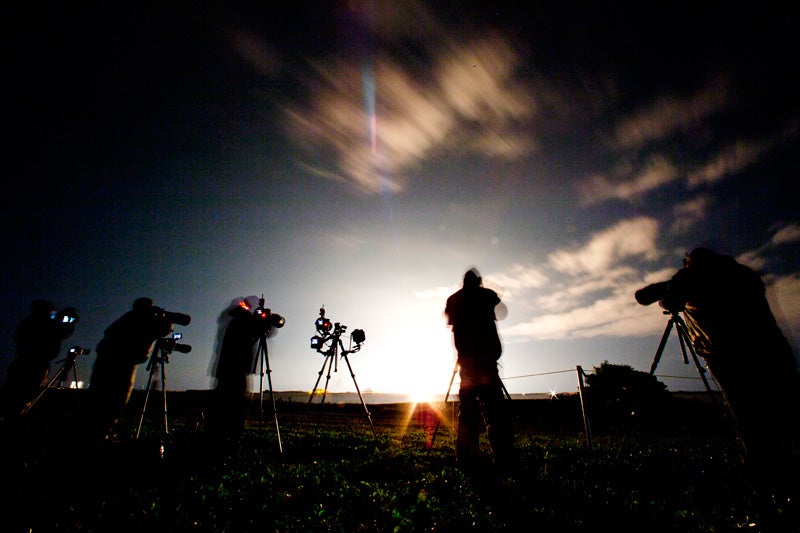Extended stay
ListenBusy ramp-up at International Space Station; both Russian and SpaceX Dragon resupply craft made deliveries recently in advance of two astronauts arriving next month with the goal of spending an entire year in space. Mars and Venus are still very close to each other and easily visible in the West sky 30 minutes after sunset. Watch every clear night this week w/ binocs to see them split apart. Mars goes towards the North and Venus to the south a little each day.
February 23, 2015
[Dave Heller] There’s plenty of hustle and bustle to prepare International Space Station for an extended stay by two astronauts. Let’s check on accommodations with Derrick Pitts, chief astronomer at the Franklin Institute. Derrick, ISS is perpetually occupied. What distinguishes this stay?
[Derrick Pitts] In this particular instance, we have two astronauts — an American and a Russian — who are going to spend an entire year on board Space Station. Typically, pairs of astronauts will spend 3 months aboard Space Station, come back, and a new pair will go up. You know, they’ll sort of cycle around this way. But the reason why these two astronauts are spending a year in space is that so NASA can do a long-term extended study of the effects of the space environment, particularly zero gravity, on the body in space for this long period. Now the really cool thing about this is that if you’re trying to run an experiment like this, it’s really important to have both the experiment running itself and to have a control. Now, how do you have a control for medical science on a human being when you’re comparing the effects of against someone who doesn’t have the effects for a full year? How do you do that? I mean, the organisms essentially have to be exactly alike. And in this case, as it turns out, that’s the case. Scott and Mark Kelly, both NASA astronauts, are twins. So, Scott Kelly is going to go to space for a year while his brother Mark stays here on the planet, and the comparisons will be made between the two over time using Mark as the control and Scott as the guinea pig, if you will.
What avails will be on board to help mitigate the effects of zero gravity for that duration?
Exercise is always the primary one that’s being considered for a number of reasons. You know, primarily we think of exercise as being a way to keep the muscles toned. But you know it’s not just the big muscles of the body in the arms and the legs, but it’s also cardiac muscle as well. So by exercising, not only can you mitigate the effects of a zero gravity environment where there’s no load on the body at all to keep the muscles in some sense of tone, but also to keep the heart muscle in some better condition, some more Earth-like condition. But at the same time, the exercise also seems to mitigate the effects of zero gravity on bone density and bone growth. But the real point of this is that we can see what are the ways in which our body has developed under 1G for which we might see some change in a zero gravity environment over a long period of time, longer than just three months.
Are there special mental exercises called for to stay keen?
I’m sure there are. You know, astronauts work constantly day-in, day-out all day. They have regular schedules in which they work, exercise, relax, you know, have all sorts of other activities that they do to try to approximate as much a sort of regular lifestyle as possible, outside of the 1G lack. And you know, outside of the fact that they can’t go outside for a walk or a run or anything like that. There are all sorts of mental exercises I’m sure, so not only is this a physiological study, but it’s also a psychological study as well to be able to understand this. Space flight going forward in the future — if we expect to be exploring our solar system, the deep solar system, mean that there’s going to be some very long trips without very many rest stops along the way. So we need to be able to understand it as best we can what the effects of confined living space with the idea of just living in space entirely will do to us.
You cited the goal of eventually heading out to the Red Planet, though lucky Earthlings need only step outside to gaze aloft and see Mars.
In fact what you’ll see at the end of this week using a pair of binoculars, you’ll be able to see Venus and Mars not only really close together but if you watch over a number of days, you’ll see them begin to split apart. Mars will seem to go a little bit to the North, Venus will seem to go a little bit toward the South. And Venus being very bright will seem to easily indicate the position of Mars without any problem right next to it — small, sort of pinkish object.
WHYY is your source for fact-based, in-depth journalism and information. As a nonprofit organization, we rely on financial support from readers like you. Please give today.





